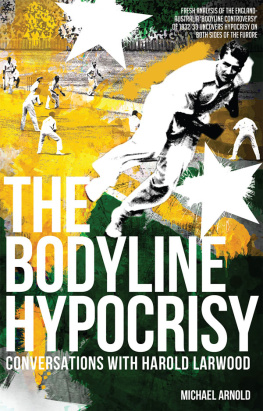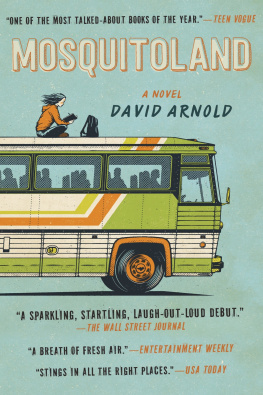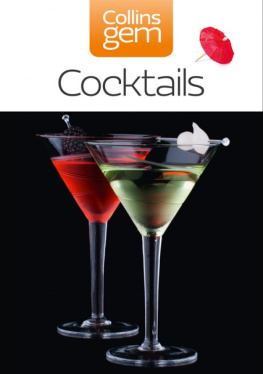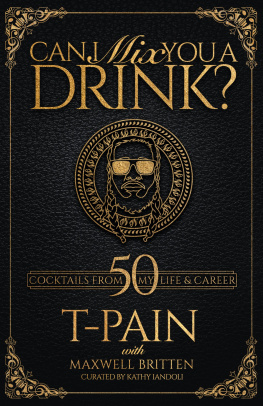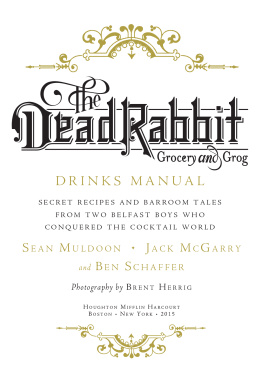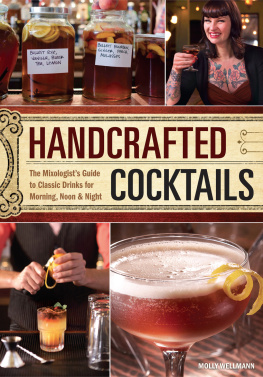Arnold - Liquid intelligence : the art and science of the perfect cocktail
Here you can read online Arnold - Liquid intelligence : the art and science of the perfect cocktail full text of the book (entire story) in english for free. Download pdf and epub, get meaning, cover and reviews about this ebook. year: 2014, publisher: W. W. Norton & Company, genre: Home and family. Description of the work, (preface) as well as reviews are available. Best literature library LitArk.com created for fans of good reading and offers a wide selection of genres:
Romance novel
Science fiction
Adventure
Detective
Science
History
Home and family
Prose
Art
Politics
Computer
Non-fiction
Religion
Business
Children
Humor
Choose a favorite category and find really read worthwhile books. Enjoy immersion in the world of imagination, feel the emotions of the characters or learn something new for yourself, make an fascinating discovery.

- Book:Liquid intelligence : the art and science of the perfect cocktail
- Author:
- Publisher:W. W. Norton & Company
- Genre:
- Year:2014
- Rating:5 / 5
- Favourites:Add to favourites
- Your mark:
Liquid intelligence : the art and science of the perfect cocktail: summary, description and annotation
We offer to read an annotation, description, summary or preface (depends on what the author of the book "Liquid intelligence : the art and science of the perfect cocktail" wrote himself). If you haven't found the necessary information about the book — write in the comments, we will try to find it.
Winner of the 2015 James Beard Award for Best Beverage Book and the 2015 IACP Jane Grigson Award.
A revolutionary approach to making better-looking, better-tasting drinks.
In Dave Arnolds world, the shape of an ice cube, the sugars and acids in an apple, and the bubbles in a bottle of champagne are all ingredients to be measured, tested, and tweaked.
With Liquid Intelligence, the creative force at work in Booker & Dax, New York Citys high-tech bar, brings readers behind the counter and into the lab. There, Arnold and his collaborators investigate temperature, carbonation, sugar concentration, and acidity in search of ways to enhance classic cocktails and invent new ones that revolutionize your expectations about what a drink can look and taste like.
Years of rigorous experimentation and studybotched attempts and inspired solutionshave yielded the recipes and techniques found in these pages. Featuring more than 120 recipes and nearly 450 color photographs, Liquid Intelligence begins with the simplehow ice forms and how to make crystal-clear cubes in your own freezerand then progresses into advanced techniques like clarifying cloudy lime juice with enzymes, nitro-muddling fresh basil to prevent browning, and infusing vodka with coffee, orange, or peppercorns.
Practical tips for preparing drinks by the pitcher, making homemade sodas, and building a specialized bar in your own home are exactly what drink enthusiasts need to know. For devotees seeking the cutting edge, chapters on liquid nitrogen, chitosan/gellan washing, and the applications of a centrifuge expand the boundaries of traditional cocktail craft.
Arnolds book is the beginning of a new method of making drinks, a problem-solving approach grounded in attentive observation and creative techniques. Readers will learn how to extract the sweet flavor of peppers without the spice, why bottling certain drinks beforehand beats shaking them at the bar, and why quinine powder and succinic acid lead to the perfect gin and tonic.
Liquid Intelligence is about satisfying your curiosity and refining your technique, from red-hot pokers to the elegance of an old-fashioned. Whether youre in search of astounding drinks or a one-of-a-kind journey into the next generation of cocktail making, Liquid Intelligence is the ultimate standardone that no bartender or drink enthusiast should be without.
450 color photographsArnold: author's other books
Who wrote Liquid intelligence : the art and science of the perfect cocktail? Find out the surname, the name of the author of the book and a list of all author's works by series.


